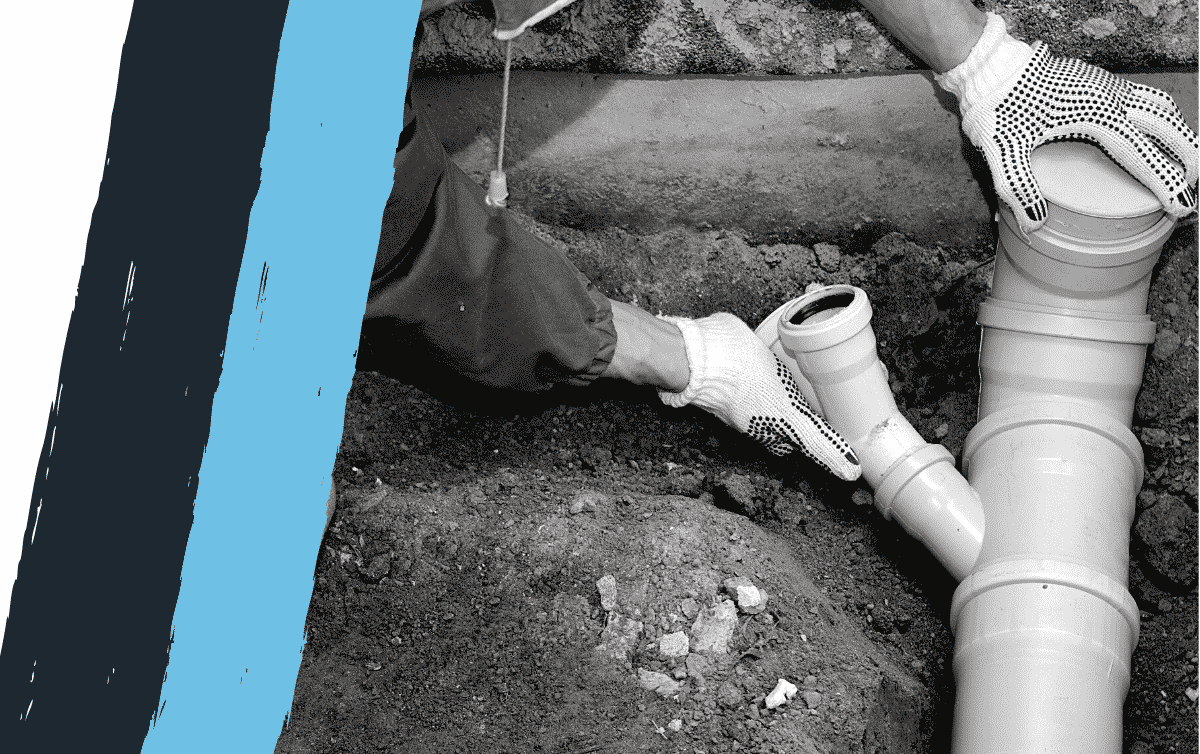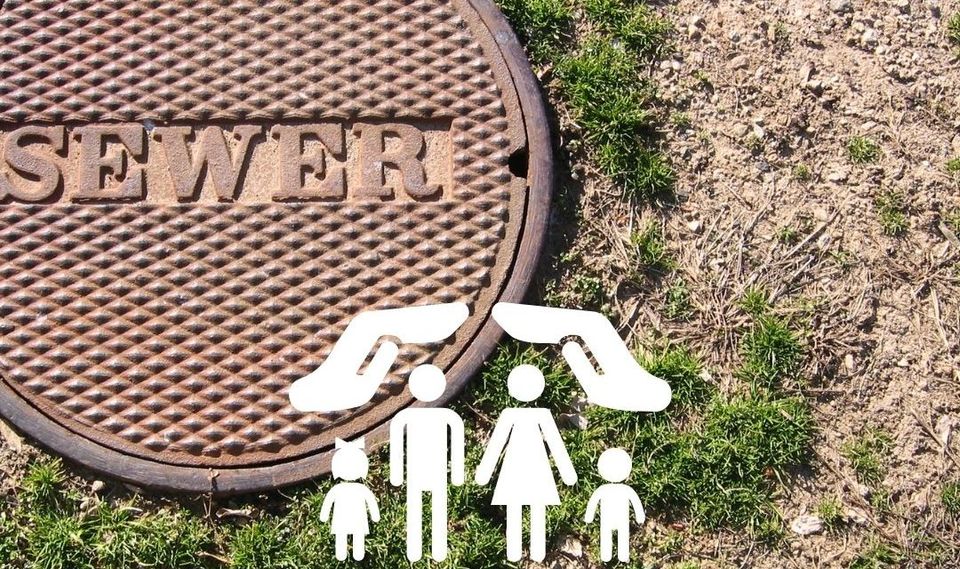Is Sewer Line Repair Covered By Insurance? Here's What You Need To Know!
Let’s face it, folks—sewer line repairs can be a real headache. But wait, here’s the big question: is sewer line repair covered by insurance? This might just be the lifeline you’ve been searching for when disaster strikes underground. So, buckle up because we’re diving deep into the world of sewer line repair insurance coverage, and I promise it’ll be worth your time.
Now, imagine this scenario: you wake up one morning, and BAM—you’ve got sewage backing up into your home. Not only is it gross, but it’s also expensive to fix. Before you panic, let’s figure out if your homeowner’s insurance has got your back. We’ll break it all down so you can make an informed decision and save some serious cash along the way.
Whether you’re a first-time homeowner or a seasoned pro, understanding your insurance coverage is crucial. Don’t get caught off guard by unexpected expenses. Let’s explore the ins and outs of sewer line repair coverage and how it can save your wallet—and your sanity!
Read also:Doujin Desu Exploring The World Of Selfpublished Manga And Anime
Understanding the Basics of Sewer Line Repair Coverage
Alright, let’s start with the basics. Sewer line repair coverage is essentially a clause in your homeowner’s insurance policy that may help cover the cost of repairing or replacing your sewer lines. But here’s the kicker—not all policies are created equal. Some insurers offer this coverage as part of their standard policies, while others require you to purchase an endorsement or additional rider.
So, why does this matter? Well, sewer line repairs can range from a few hundred bucks to tens of thousands of dollars, depending on the severity of the damage. If your policy doesn’t cover it, you could be stuck footing the entire bill. That’s why it’s essential to know what your policy includes and what it doesn’t.
What Exactly Does Sewer Line Repair Coverage Entail?
Let’s break it down even further. Sewer line repair coverage typically covers damages caused by specific events, such as tree root invasion, ground shifting, or corrosion. However, it usually doesn’t cover routine maintenance or wear and tear. Here’s a quick list of what’s typically covered:
- Tree root damage
- Collapses due to shifting soil
- Corrosion or rusting
- Blockages caused by foreign objects
Now, keep in mind that exclusions may vary depending on your insurance provider. Always check the fine print to avoid any surprises down the road.
When Is Sewer Line Repair Covered by Insurance?
Here’s where things get interesting. Your insurance policy may cover sewer line repairs under certain conditions. For instance, if a sudden and accidental event causes damage to your sewer line, your policy might step in to help. But if the damage is due to neglect or lack of maintenance, you’re probably out of luck.
Let’s take a look at some scenarios where sewer line repair might be covered:
Read also:John Belushi Net Worth The Legacy Of A Comedy Icon
- A tree falls during a storm and damages your sewer line.
- A sewer line collapses due to a sudden ground shift.
- A sewer backup occurs due to a blockage caused by debris.
On the flip side, here are some situations where coverage might not apply:
- Damage caused by routine wear and tear over time.
- Costs associated with regular maintenance, like rooter services.
- Damage resulting from failure to address known issues.
How to Determine If Your Policy Covers Sewer Line Repairs
The best way to find out if your policy covers sewer line repairs is to review your homeowner’s insurance documents. Look for sections related to water damage, sewer backups, or underground systems. If you’re unsure, don’t hesitate to reach out to your insurance agent for clarification.
Many insurers now offer optional endorsements specifically for sewer line repairs. These endorsements can provide additional coverage for damages that aren’t included in your standard policy. While they may come with an extra cost, they could save you a bundle in the long run.
How Much Does Sewer Line Repair Cost?
Before we dive deeper into insurance coverage, let’s talk numbers. Sewer line repairs can vary significantly in cost depending on several factors, including the extent of the damage, the location of the line, and the type of repair needed. On average, homeowners can expect to pay anywhere from $1,000 to $10,000 for repairs.
Here’s a breakdown of some common costs associated with sewer line repairs:
- Diagnosis: $100-$500
- Pipe Replacement: $2,000-$10,000
- Trenchless Repairs: $2,000-$6,000
- Excavation: $500-$2,000
As you can see, these costs can add up quickly. That’s why having the right insurance coverage is so important. It can make a huge difference in your wallet when disaster strikes.
Factors That Affect Sewer Line Repair Costs
Several factors can influence the final cost of sewer line repairs. Here are a few things to consider:
- Severity of Damage: Minor repairs will obviously cost less than major replacements.
- Location of Line: Lines buried deep or located under structures can be more expensive to access.
- Type of Repair: Trenchless methods are often cheaper and less invasive than traditional excavation.
- Material Used: PVC pipes are generally cheaper than clay or concrete.
Knowing these factors can help you better estimate your potential costs and plan accordingly.
Steps to Take After a Sewer Line Failure
So, what should you do if your sewer line fails? First, stay calm—panicking won’t solve anything. Here’s a step-by-step guide to help you navigate the situation:
- Assess the Damage: Determine the extent of the problem and identify any immediate hazards.
- Contact a Plumber: A professional plumber can diagnose the issue and provide repair estimates.
- Notify Your Insurance Company: File a claim as soon as possible to initiate the claims process.
- Document Everything: Take photos and keep detailed records of all communication and expenses.
By following these steps, you’ll be better prepared to handle the situation and ensure a smoother claims process.
What to Expect During the Claims Process
Once you’ve filed a claim, your insurance company will likely send an adjuster to assess the damage. They’ll review your policy and determine if the repairs are covered. If approved, they’ll work with you to arrange repairs and reimburse eligible expenses.
Keep in mind that the process can take some time, especially if there are disputes over coverage. Be patient and stay in close contact with your insurer to avoid any delays.
Preventing Future Sewer Line Issues
While insurance can help cover unexpected repairs, prevention is always the best medicine. Here are a few tips to help you avoid sewer line problems in the future:
- Regular Maintenance: Schedule routine inspections and cleaning to catch issues early.
- Watch What You Flush: Avoid flushing non-biodegradable items that can cause blockages.
- Plant Smart: Be mindful of where you plant trees and shrubs to avoid root invasion.
- Monitor Water Usage: Sudden spikes in water usage could indicate a potential leak.
By taking these proactive steps, you can significantly reduce the risk of costly repairs down the road.
Why Preventive Care Matters
Think of your sewer line like your car—if you don’t take care of it, it’s bound to break down eventually. Regular maintenance not only extends the life of your sewer line but also helps you avoid unnecessary expenses. Plus, it gives you peace of mind knowing that your system is in good working order.
Common Misconceptions About Sewer Line Repair Coverage
There are a few common misconceptions about sewer line repair coverage that could trip you up. Let’s clear the air and set the record straight:
- Myth: All Homeowner’s Policies Cover Sewer Line Repairs. Fact: Many policies exclude sewer line repairs unless you purchase an additional endorsement.
- Myth: Routine Maintenance Is Covered. Fact: Most policies don’t cover routine maintenance or wear and tear.
- Myth: Sewer Backups Are Always Covered. Fact: Coverage for sewer backups often requires a separate endorsement.
Knowing these facts can help you avoid costly mistakes and ensure you have the right coverage in place.
Why It’s Important to Know the Facts
Insurance can be tricky, and misinformation can lead to unpleasant surprises. By educating yourself about your policy and its limitations, you’ll be better prepared to handle any issues that arise. Don’t rely on assumptions—always verify the details with your insurance provider.
Conclusion: Protect Yourself and Your Home
In conclusion, sewer line repair coverage can be a game-changer when it comes to protecting your home and wallet. While not all policies cover these repairs, many offer optional endorsements that can provide the coverage you need. By understanding your policy, taking preventive measures, and acting quickly when issues arise, you can save yourself a lot of stress and money.
So, what’s the next step? Review your homeowner’s insurance policy today and make sure you have the right coverage in place. If you’re unsure, reach out to your insurance agent for guidance. And remember, a little prevention goes a long way in avoiding costly repairs.
Got questions or comments? Drop them below and let’s keep the conversation going. Share this article with your friends and family so they can stay informed too. Together, we can make sure everyone’s got their sewer lines covered!
Table of Contents
- Understanding the Basics of Sewer Line Repair Coverage
- When Is Sewer Line Repair Covered by Insurance?
- How Much Does Sewer Line Repair Cost?
- Steps to Take After a Sewer Line Failure
- Preventing Future Sewer Line Issues
- Common Misconceptions About Sewer Line Repair Coverage
- Conclusion: Protect Yourself and Your Home



